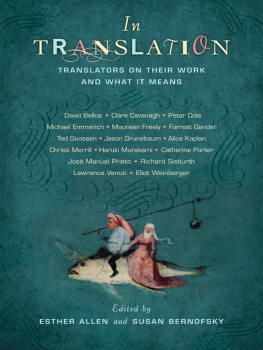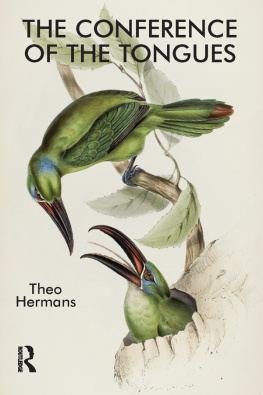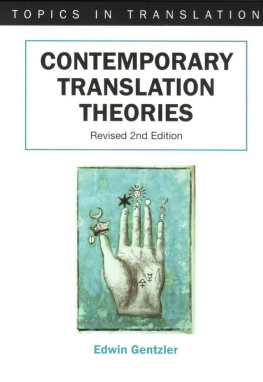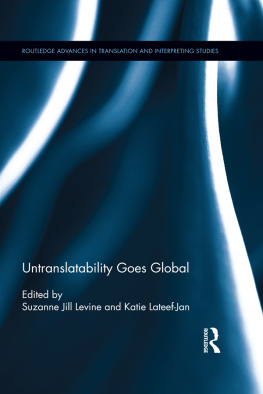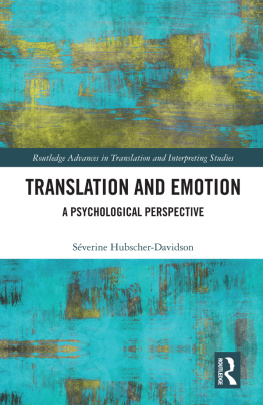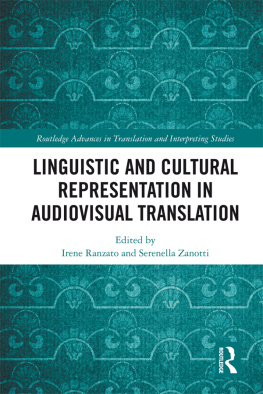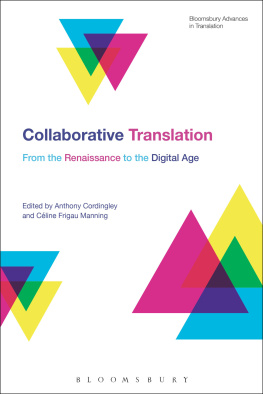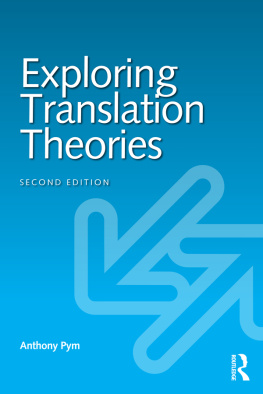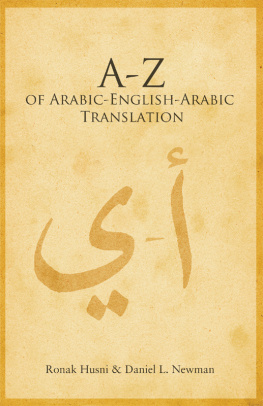Editors Note
Dror Abend-David
University of Florida
As Michael Cronin writes (2003: 68), translators in the twenty-first century have become important social and political agents. This fact has certainly been reflected in contemporary media. Who can forget the scene from Roberto Benignis 1997 film, La vita bella [Life is Beautiful], in which the hero volunteers to serve as an interpreter (despite the fact that he does not speak German) in order to spare his son from hearing the instructions of a Nazi officer? Those who do not speak Italian see this scene in (an additional) translation, rendering a translation-within-translation while representing the interpreter as an involved character (and, in this case, the protagonist). In this and other scenes like it, translation and translators become a part of the story and an inseparable part of a contemporary life that is increasingly multilingual, multiethnic, multinational, and socially diverse.
Consequently, media at the beginning of the twenty-first century presents a new trend in terms of the quantity, quality, and variety of foreign dialog. Moreover, such representation is often self-aware, ironic, and acutely conscious of the dramatic function of translation: not of transmitting content, but of infusing drama with social, political, and historical meaning. sometimes with surprising twists in plot. While it might not seem surprising that Japanese is used in a car commercial on prime-time television in the United States, it becomes quite a surprise when this is done to sell the Chrysler 200 (2014), an American car that is claimed to be (almost?) as good as a Japanese car. And translation is certainly made to steal the show in commercials such as those of Ukfoods (2008), in which actor Dennis Banks advertises imported food products that are brought from Britain to the United States. Although the commercial does not contain any languages other than English, translation is featured front-and-center as Banks talks of the imported products of Ukfoods in a local East London British slang, and his words are translated by subtitles into Standard English.
This phenomenon is a result of the fact that, even in the United States, foreign language, translation, and translators take an increasingly important role in everyday life. This is certainly reflected in the media: political drama, newscasts, thrillers, and comedies feature characters of translators and interpreters who often play an important role in the narrative. And even when translations and translators are not featured, contemporary media increasingly represent a multilingual, multicultural, and multinational reality. In the recent television series, Mozart in the Jungle (20142018), a New York-based opera company serves as a natural environment for the languages, identities, cultural references, foods, and traditions of a cosmopolitan city (often extended to exotic locations around the world). Beneath the surface, of course, such representation has an important political significance, oscillating between a diverse reality and the homogeneous political discourse that characterizes contemporary American politics.
Academically, the current collection, Representing Translation: The Representation of Translation and Translators in Contemporary Media, is a continuation of a previous collection: Media and Translation: An Interdisciplinary Approach (Bloomsbury, 2014; 2016). Media and Translation did not only contribute to the emerging field of Media and Translation, but was able to contextualize this field, highlighting the extent to which translation plays an increasingly significant social, political, commercial, and ethical role in the production of contemporary media. The current collection takes the next theoretical step to explore the manner in which translation has been moving from the background of media production, and made to serve as a captivating theme in film, television, commercials, online content, and other New Media. It addresses both the increasingly significant role that translation plays in a multilingual and global societyand the reflection of this role in contemporary media. Some themes that this collection addresses are: the role of translators and translation in drama (both in film and television); translators as protagonists; translators as agents, double agents, and negotiators; translation and translators in New Media; translation and global communication; the presentation of visual texts through alternative techniques (as in the cases of captioning and audio-description); translation within multilingual films; and translation in advertisements.
The purpose of the collection, among others, is to expand the view of translation beyond its utilitarian function, and present it as both performative and communicative. As Michael Raine (2014, 2016: 151) writes in Media and Translation: audiovisual translation is a glaze that penetrates the surface of the film, making it transportable even [as it] change[s] it completely. In this collection, however, translation is not only seen as playing a significant role in the rendering of the textbut is, in fact, becoming a part of the story and an inseparable part of a contemporary life that is increasingly multilingual, multiethnic, multinational, and socially diverse.
It is of course in the nature of a collection of scholarly essays about translation that it presents a fascinating array of scholars from various nations who address different cultures and political realities, whether in Japan, China, South Africa, Poland, Italy, or the United States. Indeed, several months ago I knew very little about the differences between the Second Sino-Japanese War and the Pacific War between 1937 and 1945. Nor was I aware of the important difference between lasagna and lasagne. I did not know that the acronym, VIP, can stand for Visually Impaired Person; and I was not aware that the TARDIS, the translation device that is featured in the series, Doctor Who (19631989), is not a genderless machine, but rather a feminine and super intelligent bio-spaceship. I hope that the reader will enjoy as I have the diverse and enriching cultural landscape that the authors in this collection provide.
The collection also provides a wide interdisciplinary array, as it features scholars in Film Studies, New Media, Linguistics, Cultural Studies, and of course Translation Studies and Audiovisual Translation. Most of our participants wear more than a single disciplinary hat, and provide an erudite outlook that forces the reader out of a disciplinary, univocal, and entrenched academic agenda. Perhaps what is common to all the chapters in this collection is the realization that translation is never only about the transmission of a finite text, and that it always involves a complex and volatile cultural exchange.
The theoretical approaches in this collection can be roughly divided into two venues: the direct representation of translation and translators as events and characters within the narrative, and the indirect representation of translation, foreign language, and cultural exchange in films, television series, and commercials. In the latter, the realization that translation and secondary language within the text are almost never about transmitting content (or else that content could simply be rendered in the primary language), provides space for considering the diverse manners in which the dramatic function of translation is used in contemporary media.


